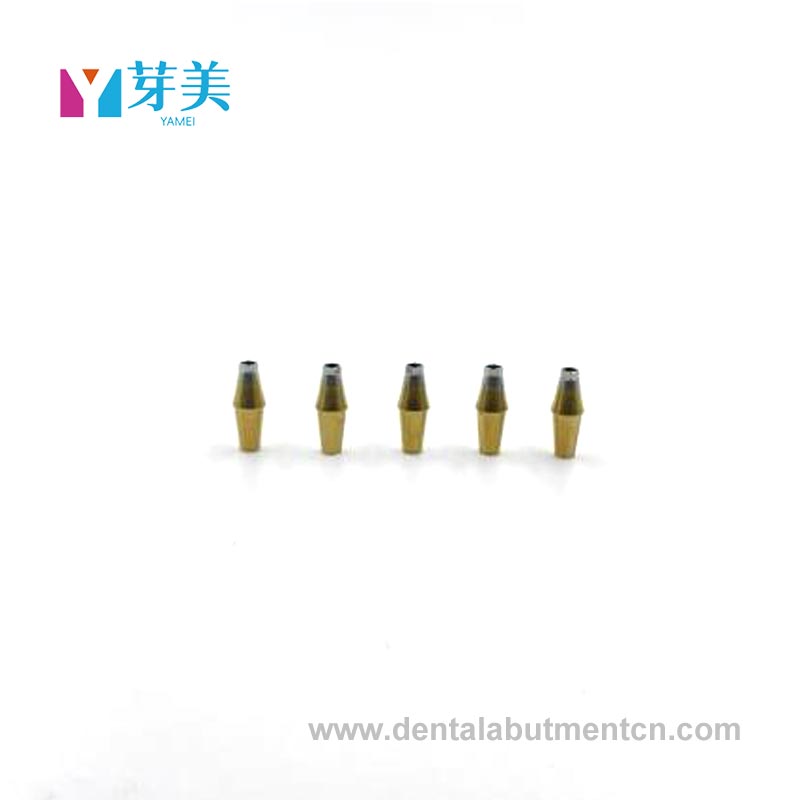What Makes Prosthetic Abutments the Key to Next-Generation Dental Restoration?
2025-11-05
In the field of modern implant dentistry, precision and durability define success. Among the essential components in a dental implant system, the prosthetic abutment plays a crucial yet often underestimated role. This small but vital connector is the intermediate structure that links the dental implant fixture (implanted into the jawbone) and the prosthetic crown (the visible part of the artificial tooth). Its function goes far beyond mechanical connection—it ensures stability, aesthetic integration, and long-term performance of the entire implant system.
The purpose of a prosthetic abutment is to provide a stable base for the prosthetic crown while transmitting the chewing forces safely to the implant and jawbone. The accuracy of its design, material choice, and fit precision determine how well the implant will perform over time. When designed and manufactured correctly, prosthetic abutments offer optimal soft tissue management, biocompatibility, and load distribution, preventing complications such as bone loss or crown loosening.
Yamei’s advanced prosthetic abutments are engineered with strict precision standards and cutting-edge surface treatment technologies, ensuring compatibility with major implant systems while maintaining exceptional aesthetic and functional performance.
What Are the Key Features and Specifications of a Prosthetic Abutment?
To fully understand the engineering excellence behind prosthetic abutments, it is essential to analyze their technical parameters, materials, and customization options. The following table provides a detailed overview of standard Yamei prosthetic abutment specifications:
| Parameter | Specification | Description |
|---|---|---|
| Material Composition | Titanium Grade 5 (Ti-6Al-4V ELI) / Zirconia | Ensures superior strength, corrosion resistance, and biocompatibility |
| Surface Treatment | Anodized / Polished / Sandblasted | Promotes tissue integration and aesthetic uniformity |
| Connection Type | Internal Hex / Conical / Morse Taper | Provides secure mechanical stability and minimizes micro-movement |
| Platform Diameter | 3.5 mm – 6.0 mm | Compatible with multiple implant systems |
| Abutment Height | 4 mm – 10 mm | Customizable based on prosthetic requirements |
| Torque Recommendation | 25 – 35 Ncm | Ensures optimal retention without stress concentration |
| Cemented or Screw-Retained Options | Available | Supports both clinical preferences and prosthetic workflows |
| Color Option (for Zirconia) | White / A2 / A3 shades | Enhances natural aesthetic appearance in anterior restorations |
These characteristics demonstrate how engineering precision, custom adaptability, and biological compatibility converge to make prosthetic abutments indispensable to implant dentistry.
Why Prosthetic Abutments Are Vital in Implant Success
A. Structural Integrity and Functionality
The prosthetic abutment serves as the load-bearing core of the restoration. Its geometry ensures a seamless fit between the implant and the crown, minimizing micromotion that could lead to implant failure. The internal design—such as a conical or hex connection—prevents rotational movement, ensuring the prosthetic crown remains firmly anchored even under high bite forces.
B. Aesthetic Excellence
For anterior restorations where aesthetics are critical, zirconia abutments offer superior translucency and color matching to the surrounding teeth. This ensures a natural, lifelike appearance while maintaining strength and stability. The integration of CAD/CAM digital technology allows precise customization to individual patient anatomy.
C. Biological Compatibility and Tissue Health
Yamei prosthetic abutments are designed to promote soft tissue attachment and prevent bacterial infiltration at the implant-abutment interface. The smooth surface finish minimizes plaque accumulation and supports healthy gingival contours. Titanium abutments, with their proven biocompatibility, integrate seamlessly with soft tissues, reducing inflammation and ensuring long-term implant stability.
D. Versatility in Clinical Applications
Whether for single-tooth restorations, bridgework, or full-arch solutions, prosthetic abutments are available in multiple configurations. Custom abutments can be digitally milled to match patient-specific gingival contours, providing an ideal emergence profile and improved comfort.
E. Future-Ready Design and Innovation
As digital dentistry evolves, prosthetic abutments are integrating more advanced manufacturing technologies. The trend toward CAD/CAM precision milling, 3D scanning compatibility, and digital workflow integration allows dental professionals to achieve more predictable outcomes with less chair time. The future points toward fully customized, digitally guided implant solutions where abutments are designed within the patient’s digital impression data.
How Prosthetic Abutments Are Shaping the Future of Implant Dentistry
A. Integration with Digital Workflows
In the next generation of dental practice, prosthetic abutments will become part of a fully digital restorative ecosystem. From digital impression scanning to 3D-printed models and computer-aided milling, abutments are now produced with micron-level accuracy. This ensures perfect alignment with the implant platform and prosthetic restoration, reducing the margin for error in manual adjustments.
B. Materials Evolution
The development of hybrid abutments, which combine titanium bases with zirconia superstructures, represents the future direction in dental prosthetics. These hybrid designs balance mechanical strength and aesthetic excellence, addressing both anterior and posterior clinical demands. Research in surface nanotechnology also points toward bioactive coatings that enhance osseointegration and tissue bonding.
C. Sustainability and Cost Efficiency
Manufacturers like Yamei are focusing on sustainable production and cost-effective precision by leveraging high-grade recyclable titanium and automated CNC machining. This results in reduced waste and consistent quality assurance, ensuring affordability without compromising clinical outcomes.
D. Clinical Predictability
Advanced prosthetic abutments are now tested under extreme fatigue conditions to simulate years of functional wear. The use of finite element analysis (FEA) during the design process allows engineers to identify stress concentration zones, optimizing load distribution. These advancements ensure implants remain reliable even under complex occlusal forces.
Frequently Asked Questions (FAQ)
Q1: What factors determine the selection of a suitable prosthetic abutment?
A: The choice depends on several factors, including implant connection type, gingival height, location of restoration (anterior or posterior), and aesthetic demands. For example, titanium abutments are ideal for posterior load-bearing restorations due to their strength, while zirconia abutments are preferred in anterior areas for aesthetic appeal. A precise fit is essential to avoid bacterial microleakage and ensure long-term stability.
Q2: How does a customized abutment improve implant performance?
A: Customized abutments, designed through CAD/CAM digital technology, are tailored to individual patient anatomy. This personalized approach ensures an ideal emergence profile, perfect crown alignment, and natural gum contour. It minimizes pressure on soft tissues, enhances hygiene, and provides a more comfortable, durable, and aesthetic restoration outcome.
The Future of Dental Restoration Begins with Precision
Prosthetic abutments represent the foundation of implant success, bridging biomechanics and aesthetics into one cohesive solution. As technology continues to advance, these components will play an even greater role in redefining restorative dentistry—making implants stronger, more natural-looking, and more accessible to patients worldwide.
Yamei, as a professional dental component manufacturer, continues to innovate with superior engineering, precise manufacturing, and global compatibility across implant systems. With a strong commitment to quality, Yamei’s prosthetic abutments provide the reliability and aesthetic results demanded by today’s dental professionals.
For more details about our full range of dental solutions or to discuss custom abutment designs, contact us today to explore how Yamei can support your next-generation implant restoration needs.



